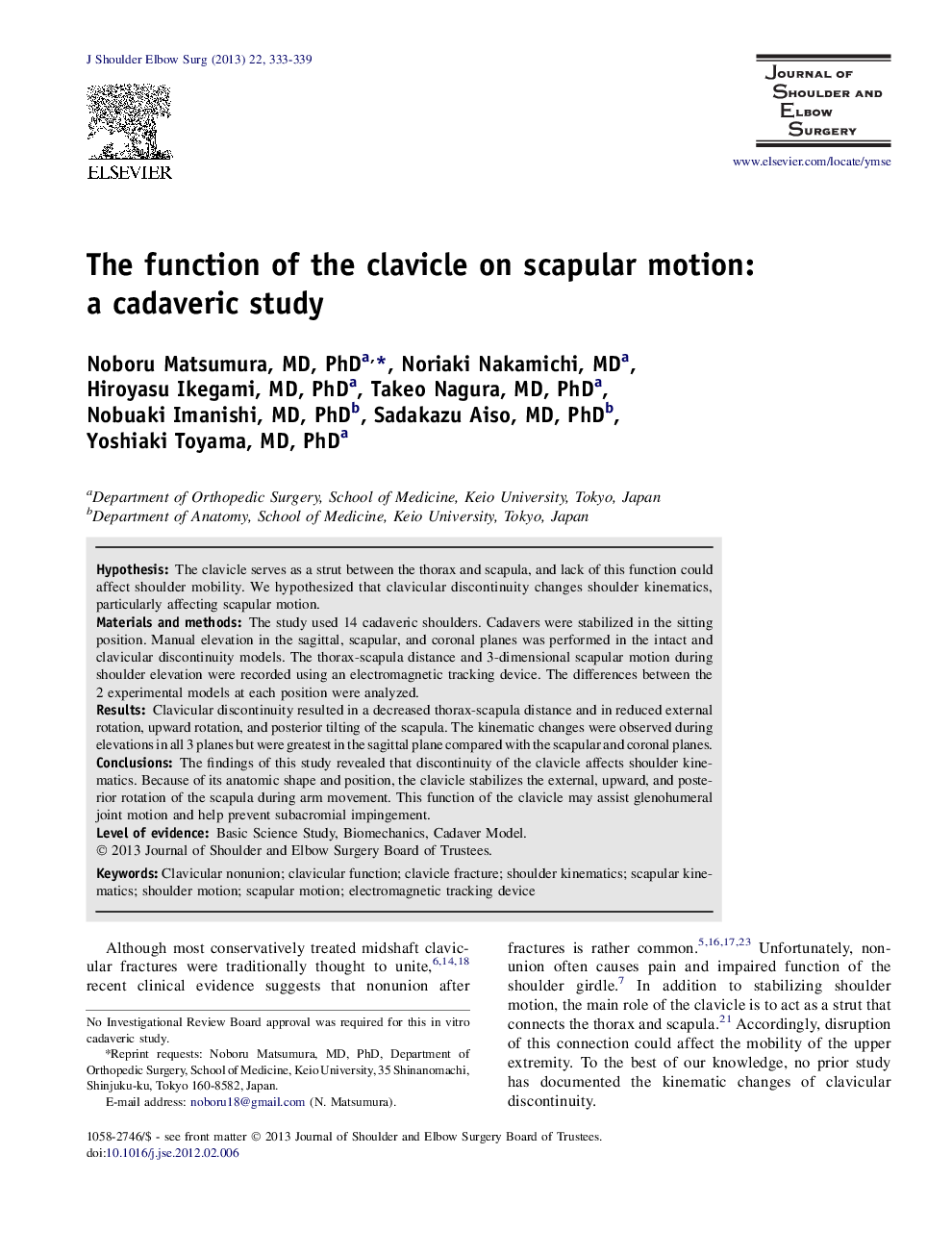| Article ID | Journal | Published Year | Pages | File Type |
|---|---|---|---|---|
| 4075201 | Journal of Shoulder and Elbow Surgery | 2013 | 7 Pages |
HypothesisThe clavicle serves as a strut between the thorax and scapula, and lack of this function could affect shoulder mobility. We hypothesized that clavicular discontinuity changes shoulder kinematics, particularly affecting scapular motion.Materials and methodsThe study used 14 cadaveric shoulders. Cadavers were stabilized in the sitting position. Manual elevation in the sagittal, scapular, and coronal planes was performed in the intact and clavicular discontinuity models. The thorax-scapula distance and 3-dimensional scapular motion during shoulder elevation were recorded using an electromagnetic tracking device. The differences between the 2 experimental models at each position were analyzed.ResultsClavicular discontinuity resulted in a decreased thorax-scapula distance and in reduced external rotation, upward rotation, and posterior tilting of the scapula. The kinematic changes were observed during elevations in all 3 planes but were greatest in the sagittal plane compared with the scapular and coronal planes.ConclusionsThe findings of this study revealed that discontinuity of the clavicle affects shoulder kinematics. Because of its anatomic shape and position, the clavicle stabilizes the external, upward, and posterior rotation of the scapula during arm movement. This function of the clavicle may assist glenohumeral joint motion and help prevent subacromial impingement.
